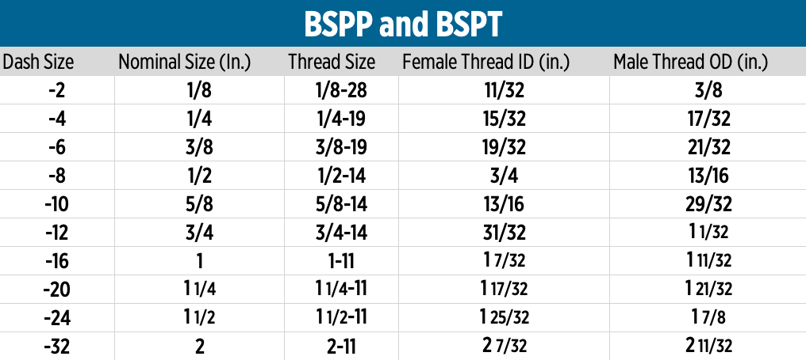British Threads
BSP is the abbreviation for British Standard Pipe. There are two distinct types; BSPP (British Standard Pipe Parallel) and BSPT (British Standard Pipe Tapered). These are historically known as Whitworth threads, devised and specified by Joseph Whitworth in 1841, and are still the standard for British thread standard today. Though commonly confused with NPT fittings, most sizes actually have a different British thread pitch, and the O.D.'s and thread form are close, but not the same.
BSPP (parallel) male threads mate with a BSPP (parallel) female fitting or a female port connection. The male and female threads are straight and have a 30° seat. The female port has an O-ring or male fitting which incorporates a soft metal ring to provide the seal.
Because they are so close in pitch, the 55° thread angle on BSPP connectors is sometimes confused with the 60° angle NPSM (National Pipe Straight Mechanical) connectors, yet they are not interchangeable.
However, with flanges, there is a great deal of compatibility. In most cases, flange fittings that fall into the British standards are equivalent to SAE Code 61 or Code 62.
BSPT (tapered) male thread mates with a BSPT (tapered) female or it can mate with a BSPP (parallel female). In either case, the seal is made on the threads. As with the BSPP, the BSPT 55° thread angle is not interchangeable with an NPFT 60° thread.

Note: the British thread sizes are sometimes expressed as fractional dimensions preceded by the letters "G" or "R", where "G" represents a parallel thread and "R" represents a tapered thread. Example: BSPT 5/8-14 can be designated by R 5/8 and BSP 1/16-28 can be designated by G 1/16.

